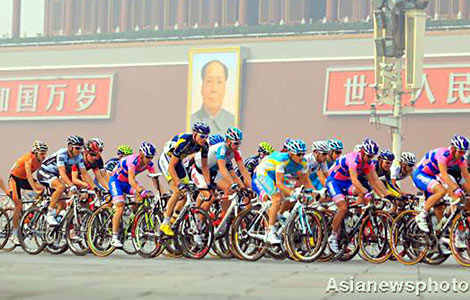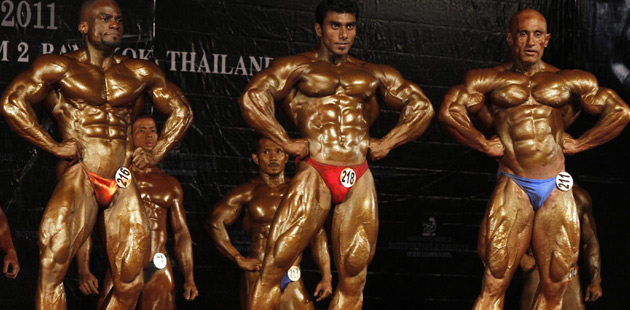Luxury bags a phenomenon in China
Updated: 2011-10-10 16:34
By Dr Henri Lee (chinadaily.com.cn)
|
|||||||||||
The first ever ladies handbag that I saw was the one that my mother used to carry coins, a handkerchief, cosmetics and other usual ladies stock. I believe that the contents of handbags have never changed. In fact, I doubt if it will ever change at all.
In China, the significance and importance of the handbag has changed dramatically over the years. Firstly, I noticed that in China there are more men carrying the handbag of the lady they are accompanying than any other country that I have been to. Certainly, it is a matter of politeness being the gentlemen. At the same time, because the bags are getting bigger in size, it does take stronger biceps to carry them. Apparently, there is one more reason for this behaviour - it is to show off to everyone else that the girl is being loved extremely well by her male counterpart, a sign that says "I am the lucky one". For sure, the gentlemen are more than willing to do so because they have a loved one to show off. It is to their mutual benefit and understanding. Standing-out is important in a country with a population of 1.3 billion.
Secondly, for the female owners, the bag carries a recognized prestige and status. The brand name implies the level of such prestige and it is represented in the cost and limited availability of the bag. In this super-sized commercialized world, both the suppliers and advertising agents are devoted to promoting a unique image for the products. While the products themselves are of trendy design and supreme quality, the attached 'prestige' is elevated further by assigning 'limited edition' to nearly every one of the products. At the same time, consumers are lured into this commercial scam (a hyper inflated price tag in my personal opinion). Without the brand name tags attached to the products, it would be absolutely difficult for anyone to imagine why one such bag could be worth 1000 times more than the cost of producing it (assuming 250 rmb is the basic cost of materials and labour required for an average handbag).
This amazement is actually shared by most of the general public. Every day, we have millions of pretty faces sending and uploading their own images on micrblogs, Facebook and other social networking media. But what attracts the most controversy and debate is pictures of those young girls holding one or more bags in their hands. To these girls, any publicity is good publicity. In a country of 1.3 billion, one of the short cuts to attract 250,000 hits online is simply by controversy, a tool which can be created by stimulating feelings jealousy and injustice through stories that most netizens love to share and denounce. In the last six months, we have seen the case of Guo MeiMei, then You MeiMei, and the latest favourite hate target of netizens is You Yixi. She is the daughter of the deputy head of Jinpin county, Guizhou province, who showed off her LV travel bag and Hermes handbag on her microblog.
In a swift counterattack, You's father claimed to the media that his daughter's branded bags are all knockoffs, and these bags were bought from online shops on taobao.com, paying less than 100 yuan for each one, not from luxury stores. One trend we can be sure of from three cases is that the branded handbags, whether they may be genuine or fake, create the assumed economic power that these bags carry and subsequently illustrate the disparity between the have's and have-not's. How can it be possible? I have been to luxury brand name shops in Hong Kong and found that designer bags can cost as much as 450K yuan each. In China, while thirty percent of people use computers for social networking, it is not hard to pick on these easy "wanna-be" targets because the public loves to hate the wealth gap. The bags are the scapegoats. They attract more attention than the "wanna-be'. The moral of the story is, if you do not want any publicity or attention from others, make sure you carry a recycled bag instead.
The author is an Australian freelance scholar and researcher in Chinese entrepreneurship.
Related Stories
'Talented' Guo eyes big screen, Cathay Pacific thinks better of 'extra mile' 2011-08-19 07:58
Guo Meimei and the Red Cross scandal 2011-07-15 14:38
- Hu: national rejuvenation a common aspiration
- Reports of J-10B jet crash untrue
- 13 Chinese sailors killed on Mekong
- Mass migration, major problems
- China's rising labor cost aids US jobs
- Attack in Mekong kills 11 Chinese
- China celebrates centenary of 1911 Revolution
- Stricter rules over banking products
Hot Topics
Libya conflict, Gaddafi, Oil spill, Palace Museum scandal, Inflation, Japan's new PM, Trapped miners, Mooncake tax, Weekly photos, Hurricane Irene
Editor's Picks

|

|

|

|

|

|







